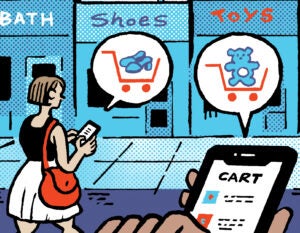“Data-Driven Thinking” is written by members of the media community and contains fresh ideas on the digital revolution in media.
Today’s column is written by Gareth Davies, co-founder at Truth{set}.
Google’s announcement to deprecate the Chrome cookie within two years seals the fate of anonymous behavioral data and its underlying identifiers and technology. The move threatens a litany of open programmatic use cases, from view-through and multitouch attribution to (re)targeting and ad personalization.
In the wake of this news, some have proclaimed the certain death of the DMP. Some are calling the category out as zombie technology that no longer serves the needs of either the publisher or the brand, denouncing its ability to keep pace with a post-cookie identity landscape and evolving consumer privacy regulation.
There’s a strong argument that they called it right. The DMP’s original mandate – to collect, segment, taxonomize and port anonymous cookie-based audiences across the programmatic ecosystem for targeting and personalization – is under immense threat, especially when viewed through the lens of consumer privacy.
But naysayers are missing the point. The DMP is not dead – but the free-for-all days of non-consented, persistent identification and data promiscuity are. What must also die is the near-total disregard for consumer privacy and consent, which reigned supreme in the quest for one-to-one marketing and its associated riches.
Rather than be mourned, the demise of the third-party cookie and the DMP of old should be celebrated. The DMP’s core capabilities have already been distributed across products capable of taking us to new heights, including demand-side platforms, supply-side platforms, customer data platforms (CDPs), onboarders, data marketplaces and more.
Yes, come 2022, browser-based cross-site and cross-device tracking and anonymized cookie-based behavioral data will cease. They will be replaced with aggregated and obfuscated user segments, reported on by Chrome’s Privacy Sandbox. Much like Ads Data Hub or Facebook’s Custom Audience offerings, brands and publishers will rely on aggregated and de-identified reporting of their user. They will be forced to trust the walled gardens’ black boxes to offer them the visibility they need for campaign performance, with little to no ability to measure and deduplicate across gardens or on the open web.
For marketers especially, this may even be welcome, offering a manageable trade-off between privacy compliance and their marketing objectives. Yet for many, this presents a dystopian future where even more power, control and data gets centralized within walled gardens.
But there is another way. If we concede that a data management platform’s core raison d’être is to allow the matching, enrichment and activation of consumer data, there is every reason to be confident that these same capabilities will thrive in a post-cookie world. As cookies die – likely followed by mobile advertising IDs – first-party, consented data will become king.
Expect brands, publishers and their technology platforms to invest in capturing, managing and securely matching consented PII across their respective environments. The scale of this first-party data must, and will, increase significantly (cue publisher paywalls, cross-publisher consortia and DTC M&A). And the capabilities will emerge to securely match first-party PII between parties, without the need for the data to leave its point of origin.
AdExchanger Daily
Get our editors’ roundup delivered to your inbox every weekday.
Daily Roundup
New technology will also offer the ability to cryptographically secure, match and exchange data between parties without the need for trust. Consent, governance and security engines will likely be built as stand-alone technologies and layered into the DMP, or in some cases built as foundational capabilities within the DMP stack.
This will be painful for some as they re-architect legacy systems to support these new capabilities. Those that are built on a spine of PII (onboarders, CDPs and the like) are well positioned. Look no further than LiveRamp with IdentityLink, its publisher login solution (Authenticated Traffic Solution) and its Faktor.io acquisition to see how this future state will unfold.
Rather than mourn the loss of the third-party cookie and its partner in crime, the DMP, let’s embrace our industry’s potential for evolution and change. We must recognize that the simplest way to solve for privacy is simply to offer the consumer value and ask for their permission to engage with them in return.
And expect the technology used to do this – while it may be called a new acronym – to be a platform that is really good at managing data.
Follow Gareth Davies (@GarethDaviesRM) and AdExchanger (@adexchanger) on Twitter.













